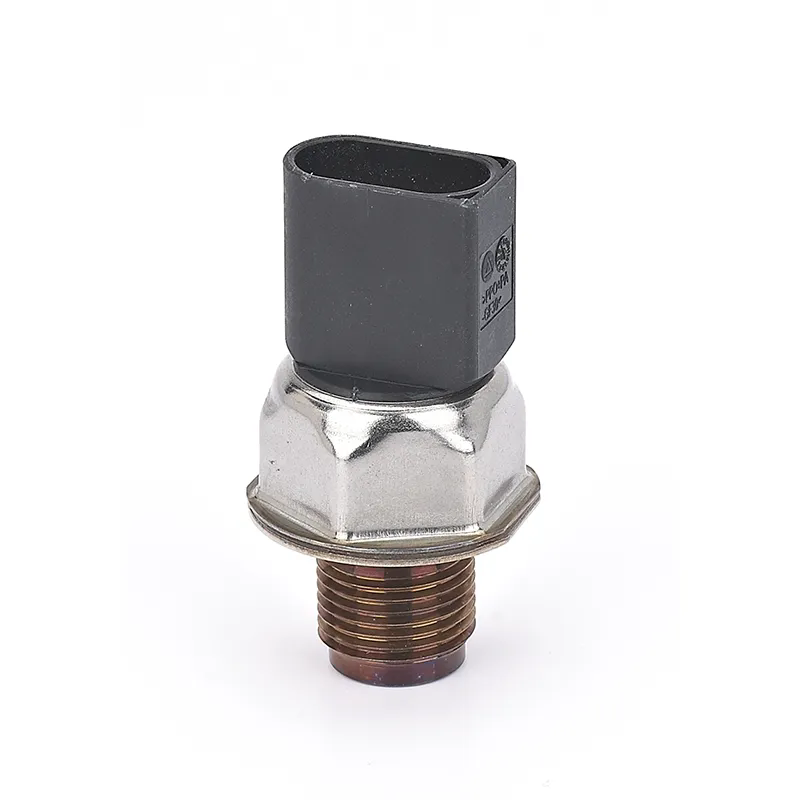What is a Fuel Rail Pressure Sensor and Why Is It Essential for Your Engine?
2024-11-28
When it comes to the performance and efficiency of modern internal combustion engines, every component plays a crucial role. One such important part is the fuel rail pressure sensor. This often-overlooked sensor is essential for ensuring the optimal operation of your engine's fuel system. But what exactly does the fuel rail pressure sensor do, and why is it so important for your vehicle's performance? In this blog, we will explore the function, significance, and benefits of the fuel rail pressure sensor, shedding light on why it’s an essential component for the smooth running of your engine.
1. What is a Fuel Rail Pressure Sensor?
A fuel rail pressure sensor is a vital part of a vehicle’s fuel injection system. It monitors the pressure of the fuel inside the fuel rail, which is the component that supplies fuel to the fuel injectors. The fuel pressure sensor measures the fuel pressure and sends real-time data to the engine control unit (ECU), which is responsible for managing engine performance.
By providing continuous pressure readings, the sensor helps the ECU make adjustments to the fuel mixture, ensuring that the engine receives the right amount of fuel for optimal combustion. This is crucial because both too much or too little fuel can lead to poor performance, decreased fuel efficiency, and potential engine damage.
2. How Does a Fuel Rail Pressure Sensor Work?
The fuel rail pressure sensor works by measuring the fuel pressure inside the rail through a strain gauge or piezoelectric element. These components detect the pressure exerted by the fuel and convert it into an electrical signal. The sensor then transmits this data to the ECU, which interprets the signal and makes necessary adjustments to the fuel injectors' operation.
When the ECU receives information from the sensor, it can adjust the fuel pump speed, injector timing, and fuel volume to ensure that the engine is running at the proper fuel-to-air ratio. This constant monitoring and adjustment help the engine maintain optimal performance and fuel efficiency under various driving conditions.
3. Why is the Fuel Rail Pressure Sensor Important?
The fuel rail pressure sensor serves several critical functions in a vehicle's fuel management system. Here are some of the key reasons why this sensor is essential:
- Ensures Proper Fuel Delivery: If the fuel pressure is too high or too low, it can cause inefficient combustion, leading to poor engine performance. The sensor ensures that the fuel injectors receive the right amount of fuel at the correct pressure, preventing engine stalling, misfires, or hesitation during acceleration.
- Improves Fuel Efficiency: By accurately regulating the fuel pressure, the sensor helps the ECU adjust the fuel injection system for optimal fuel efficiency. This can lead to better gas mileage, reducing overall fuel consumption and lowering emissions.
- Reduces Engine Wear and Tear: Maintaining the right fuel pressure prevents the engine from being over-fueled or under-fueled, which can cause excessive wear on engine components. By providing precise fuel pressure data, the fuel rail pressure sensor helps extend the lifespan of the engine.
- Supports Emission Control: The sensor also plays a role in minimizing harmful emissions. With accurate pressure data, the engine’s fuel system can maintain the ideal air-fuel ratio, reducing harmful exhaust emissions that contribute to air pollution.
4. Signs of a Faulty Fuel Rail Pressure Sensor
Like any vehicle component, the fuel rail pressure sensor can wear out over time. When it fails, it can lead to a variety of engine performance issues. Here are some common signs that your fuel rail pressure sensor may be malfunctioning:
- Engine Misfires: A faulty sensor may result in incorrect fuel pressure, causing the engine to misfire or run roughly, especially at idle.
- Poor Fuel Efficiency: If the sensor fails to send accurate data to the ECU, the engine may receive too much or too little fuel, leading to a decrease in fuel efficiency and increased fuel consumption.
- Check Engine Light: One of the most common signs of a failing fuel rail pressure sensor is the illumination of the check engine light on your dashboard. The ECU will detect the sensor’s malfunction and trigger a diagnostic trouble code (DTC) that signals the issue.
- Engine Stalling or Hesitation: An unreliable fuel rail pressure sensor can cause the engine to stall or hesitate during acceleration, as the ECU struggles to maintain the correct fuel pressure.
- Difficulty Starting the Engine: If the sensor is providing inaccurate pressure readings, the engine may have difficulty starting or may not start at all.
5. How to Maintain a Fuel Rail Pressure Sensor
Proper maintenance of the fuel rail pressure sensor can help extend its lifespan and keep your engine running smoothly. Here are some tips to ensure the sensor continues to function properly:
- Regular Inspections: Periodically check your vehicle’s fuel system for signs of wear, leaks, or corrosion that could affect the performance of the sensor. If you notice any issues, have them addressed promptly.
- Replace Fuel Filters Regularly: Clogged or dirty fuel filters can strain the fuel system and affect the pressure readings from the sensor. Replacing the fuel filter at recommended intervals helps maintain a clean and efficient fuel system.
- Use High-Quality Fuel: Poor-quality fuel or fuel contaminated with dirt or water can affect the fuel pressure sensor’s accuracy. Use clean, high-quality fuel to prevent build-up and keep the sensor working properly.
- Professional Maintenance: If your vehicle is showing symptoms of a faulty sensor, it’s essential to have it diagnosed and repaired by a professional mechanic. A malfunctioning sensor may require replacement, which should be done according to manufacturer specifications.
6. Conclusion
The fuel rail pressure sensor is an essential component that ensures your engine operates efficiently and reliably. By monitoring the fuel pressure and sending data to the ECU, it helps regulate the fuel delivery system, improving fuel efficiency, reducing emissions, and enhancing overall engine performance. A malfunctioning sensor can lead to various engine issues, but with proper maintenance, you can avoid costly repairs and ensure that your vehicle runs smoothly for years to come.
If you're experiencing engine performance issues such as misfires, stalling, or poor fuel efficiency, it may be time to check your fuel rail pressure sensor. Keeping this sensor in good working condition is key to ensuring your vehicle runs at its best, and it's a small investment in the long-term health of your engine.



